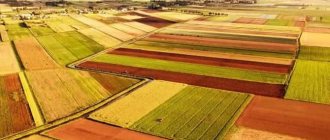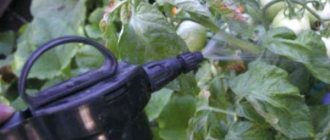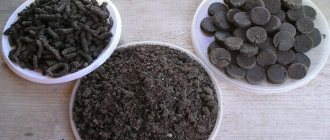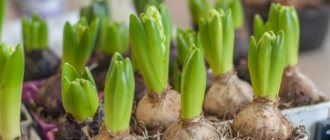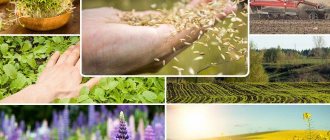What does “green fertilizer” mean?
What are green manures, how to grow them and why - this question interests everyone who strives for high yields, environmentally friendly and safe. Green manure plants, organic farming and soil fertility are inseparable concepts.
The main thing is that with the help of green manure crops you can completely avoid chemicals in your dacha.
They are grown for the sake of organic matter, which will become a substrate for the life and nutrition of soil inhabitants - bacteria, fungi, worms, beneficial insects. Or it will turn into mulch, warm, shade, protect.
Green orderlies, bioplough - these are all synonyms for green manure helpers. They have phytosanitary properties. They are allowed to grow and then plowed into the surface layer.
Timing of sowing and planting of green manure
The peculiarity of green manure crops is the ability to sow throughout the season, as needed. Sowing green manure before planting vegetables or ornamental plants, after harvesting, is an important agrotechnical technique for maintaining soil health and fertility.
Important! When planting nutritious greenery in the ground, you should not dig more than half a spade's worth. The fertilizer must remain in the upper layers of the nutrient soil, otherwise, under the weight of clods of earth, it will be compressed and begin to rot rather than overheat.
Each green manure plant has an individual time frame for sowing and burying, it all depends on the growing season of each species. Features of cold resistance, moisture requirements, mowing times are indicated in the article for each plant. But most herbs for green manure have general recommendations for different stages of the gardening season.
Spring
Before sowing vegetable crops, green manure is used to fertilize the soil plus protect future seedlings from cold, sun, drying out, and pests.
Summer
The main goal is mulching of plantings, phytoprotection, weed and pest control. After harvesting early-ripening crops, green fertilizers are immediately sown to restore the strength of the soil, depleted after fruiting.
Types of green manure crops
More than 300 species of green manure plants are classified as green manure. Among them, the following groups are most in demand:
| Kinds | Peculiarities | Examples |
| Legumes |
|
|
| Brassicas |
|
|
| Cereals |
|
|
| Cruciferous |
|
|
| Hydrophiles |
|
|
| Buckwheat |
|
|
| Asteraceae |
|
|
What are green manures and what are they for?
It is not for nothing that they are called green manure: the contribution of green manure plants to the reclamation of lands used for planting can hardly be overestimated. The peculiarity of herbs in this category is excellent germination, rapid growth, rich green mass in a short period of time, unpretentiousness, and the ability to sow from spring to autumn. Main tasks of greening:
- Fertilizing the soil. Rotting green mass and roots enrich the soil with nitrogen, phosphorus, magnesium, and other essential macro- and microelements.
- Improving soil structure. After green manure, water and moisture permeability, moisture capacity, looseness, and lightness of the soil increase.
- Weed control. Green manure squeezes out weeds from the beds and does not allow them to grow.
- Control of soil insect pests. Many green manures, by releasing phytoncides or alkaloids in their composition, create unfavorable conditions for pests, cleaning the soil and protecting the future harvest.
- Suppression of fungal and viral diseases. For these abilities, green fertilizers are called phytosanitary.
- Protecting the surface of the beds from the scorching sun, weathering, and washing out.
In small plots, where there is no opportunity for the land to take a break from sowing, and where the summer resident cannot fully observe crop rotation, green manure is the only way out. Planting green manure eliminates any undesirable consequences of growing crops for the soil, allowing you to avoid rotation when there is a shortage of planting space.
Soil greening methods
- Complete fertilizer. The biomass is buried in a thickness of 3-6 cm. Both roots and shoots are used together.
- Mowing fertilizer. Green biomass is mowed and sealed.
- Waste fertilizer. Only the root parts are used. The above-ground part is cut off and used in another area or to form compost heaps.
The green manure method ensures the introduction of the necessary elements and prevents depletion of the fertile layer.
Green herbs are used in the form of:
- Natural organic biomass. To do this, they are plowed into the surface layer.
- In the form of humus or compost. Mix with fallen leaves, tops and waste and compost.
- Like mulch. The cut stems and leaves are laid out in the beds.
- In the form of liquid fertilizer. Bioinfusions are prepared based on fermentation for 8-10 days.
Cleaning green manure plants
Greens can be trimmed before flowering begins. Phacelia, clover and lupine can be left in beds longer as they will attract pollinating insects. Grains need to be harvested after they have fully grown. The stems of the plant are used as mulch, and the seed material can be used in the future. The beans are cut after harvesting.
If green manure plants grow between the rows, then they need to be removed in time before they grow higher than the main plants, otherwise the plant crops will grow slowly.
You need to plow the tops of the plants into the ground a couple of weeks before planting the seedlings. They are deepened into light soil by 13 cm, into dense soil by 7 cm.
Plowing is also carried out before the start of the winter period. It is necessary to cut off green manure leaves and stems and dig up the top layer of soil. The green mass will rot and become humus. For rapid ripening, plant remains are irrigated with medicinal solutions.
The scheme for sowing green manure plants is considered in advance at the beginning of autumn. You need to carefully inspect the planting area and select plants for planting.
How to grow green manure correctly
- Sowing is carried out as densely as possible.
- Mowing or cutting is carried out before or at the onset of flowering. But before the seeds form.
- Before planting the main crop and after cutting green manure, wait 2-3 weeks.
- Biological preparations - Vostok, Siyanie, Baikal EM-1 - are added to the mowed green substrate and to the surface of the beds. This is necessary to accelerate the conversion of organic matter into humus.
Green manure and garden crops in 1 bed should belong to different families. This will help avoid diseases and pest infestations.
When to sow?
To create a humus layer, two green manure methods are used:
- Early spring planting . As soon as the snow melts, fast-growing grasses are sown in the beds where heat-loving plants will subsequently grow. The green mass is trimmed and plowed to a depth of 3-4 cm. Or used for mulching and laying compost heaps. Zucchini and cucumbers are planted no earlier than 14 days later.
- Autumn planting . Prepares the soil for cold weather and a safe winter. Immediately after harvesting, frost-resistant species are sown. The timing of sowing green manure varies from the beginning of September to the first ten days of October. It takes 40-45 days before mowing. During this time, the height of the green mass reaches 40 cm. The roots grow to a depth of 30 cm.
The best green manure plants
It would be difficult for both a theoretical scientist and an experienced practitioner to name one universal green manure that would suit any plant. Each plant requires its own green manure, and each green manure has its own purpose, so it is difficult to determine which green manure is the best. For example, the best green manures for the soil are lupine, oilseed radish, oats, rye and phacelia. The best green manures for strawberries are still oilseed radish, rapeseed, mustard and buckwheat. The best green manures for winter are oats, rapeseed, winter rye, vetch and rapeseed.
Therefore, it makes sense to talk about each group of green manure and the most popular plants in these groups:
Legumes: sweet clover, clover, vetch, alfalfa, nomadic grass, lentils, soybeans, peas, chickpeas, seradella, beans, lupine.
Most often grown:
- lupine as green manure. It accumulates nitrogen in the soil - after lupine, any plants that need nitrogen can be planted on the site. Lupine is sown from late July to mid-August after harvesting cabbage or potatoes, but the best time for planting is early spring;
- sweet clover is an annual legume plant, which is also best planted on neutral soil in early spring, although summer and autumn plantings are quite acceptable;
Cruciferous vegetables: mustard, oilseed radish, rapeseed, rapeseed.
Most popular:
- Green manure white mustard is of great importance for crop rotation. Its roots secrete organic acids, which, interacting with the soil, release sparingly soluble phosphates, replenish the supply of potassium and convert nutrients that are inaccessible to plants for absorption into easily digestible ones;
- oilseed radish is an annual plant that can fix nitrogen and rid the area of nematodes and other pathogens. Usually planted together with vetch or other legumes.
Cereals: wheat, oats, barley, rye. Read about green manure from cereals in the next section.
- Planting daffodils in the ground
Buckwheat: buckwheat. Buckwheat has a short growing season and a developed root system, reaching one and a half meters in some cases. Buckwheat as a green manure deeply loosens the soil, reduces soil acidity and enriches poor soils with phosphorus, potassium and organic components.
Compositae, or Asteraceae: calendula, sunflower:
- The sunflower root system reaches a depth of two meters, it produces a large amount of green mass and grows on soils of any composition and any acidity.
Amaranthaceae: amaranth.
Hydrophiles: phacelia. Phacelia green manure belongs to the waterfolia family and is a valuable honey plant. It has a short growing season, a developed root system and a powerful ground part. Phacelia grows on any soil, it is cold-resistant and undemanding to lighting. Phacelia improves the structure and increases the breathability of the soil.
Winter green manures
If green manure is sown in furrows in spring, then in the fall it will be enough to scatter the seeds over the area and cover them with mulch, but you can, of course, sow winter green manure in furrows, but the planting depth should be less than in spring - no more than 3-4 cm.
Most often, rye and oats are used as winter green manures:
- rye as a green manure helps suppress weeds, destroy pathogens of fungal diseases, inhibit nematodes, its roots perfectly loosen the soil, and most of all as a precursor crop it is suitable for potatoes, tomatoes, pumpkins, zucchini and cucumbers. However, it is difficult for a flat cutter to take it, so most often it is cut off above the surface, and the area with the roots remaining in the soil is dug up;
- Oats, as green manure, loosens clay soils, clearing them of root rot. It is usually planted in combination with vetch. Oats are the best predecessor for cucumbers.
But there are other plants that are gradually gaining popularity as green manure crops:
- rapeseed as a green manure protects the soil from pests and diseases, enriches it with phosphorus and sulfur, inhibits the growth of weeds and is a suitable predecessor for eggplants, peppers and tomatoes, but it must be planted no later than August and only not in damp clay or waterlogged soils;
- vetch green manure promotes the production of nitrogen in the soil. It is sown in September; it is a successful predecessor for any seedlings;
- Green manure green manure restores soil structure and is a successful precursor for grains, potatoes and corn. It is sown in August.
Green manure for potatoes
Those who have to plant potatoes in the same area year after year know well that if the soil is not restored after harvesting potatoes, it is very quickly depleted. After harvesting, the area is sown with oats, peas and white mustard and left for the winter. In the spring, green manure seedlings are cut out with a flat cutter at a depth of 5-7 cm, and after a week or two, early potatoes can be planted in this area.
If you did not plant green manure in the fall, then as soon as the top layer of soil warms up in the spring, sow a mixture of phacelia, oats and white mustard. In a few weeks, these plants are able to grow a decent amount of green mass, which is cut out with a flat cutter before planting the potatoes (usually in the third decade of May). After harvesting the potatoes, the area is again sown with green manure.
And finally, a few tips:
- do not grow green manure and the main crop in the same area if they belong to the same family;
- Mow green manure in a timely manner, do not allow the stem and roots to become lignified, as well as seeds from ripening - this clogs the area, complicates loosening the soil and leads to uncontrolled growth of green manure;
- adhere to the laws of crop rotation, do not grow the same green manure on the site from year to year;
- choose the right green manure: some grow well on poor soils, others need fertile soils.
Which green manures to sow under which crops: table
Green manure is selected according to the following criteria:
- the crop in front of which sowing is carried out;
- Soil pH and soil characteristics;
- main purpose for planting.
| Name | What can you plant? | What not to sow |
| Potato |
| |
| cucumbers |
| |
| Pepper |
| |
| All types of cabbage |
|
|
| Onion |
|
|
| Strawberry |
| |
| Eggplant |
| |
| Peas |
|
|
| Pumpkin and squash |
|
The impact of green manure on soil varieties
Green manure does the following positive things for soils:
- Enrichment of the soil with all kinds of elements and organic matter;
- Improving soil characteristics and composition;
- Increased moisture and air permeability;
- Preventing erosion.
For certain types of soil they act differently, changing its structure and the level of acid content in it.
Experienced gardeners believe that the soil should be constantly worked, so green manure can be planted with plant crops, as well as after they have been harvested.
- Legumes can be planted in absolutely any soil structure. They free the planting site from nematodes, weeds stop growing, and the soil becomes light and saturated with nitrogenous bases. These fertilizing materials are similar in their positive effect to fresh manure.
- Cereals can live in any soil, even in loam or soil with a lot of sand. This culture allows for better penetration of liquids into the soil, as a result there are more nitrogen and potassium compounds in the soil, reducing the likelihood of erosion. These green manure plants take root better in soil with a significant acid content. At the same time, they also stop the growth of weeds. Grasses have a very long root system that grows in different directions, so weeds cannot break through it.
- Cruciferous plants improve the quality characteristics of any soil. The plant does not take root in soil with a high acid content. The root system naturally loosens the soil, they have a beautiful and large green mass. They saturate neighboring plants with phosphorus elements, which are very difficult to produce, thanks to which other useful elements are not washed out of the soil. Rapeseed is considered picky about conditions, as it grows disgustingly in poor and overly moist soil, which contains a large amount of acid. Rapeseed, mustard and radish are not planted near cabbage, as they have a general incompatibility. If you plant them together, then most likely there will be no cabbage this year.
- Hydrophiles are green manures that actively fight weeds and bacteria. These plants improve soil aeration. The soil becomes lighter and the acid level decreases.
- Buckwheat plants enrich the soil with useful substances such as phosphorus and potassium. The soil becomes lighter. Buckwheat is considered an excellent loosening agent.
- Amaranths loosen the soil, the soil becomes more fertile.
Choosing plants for different types of soil
Which green manures are the best, if plants are selected taking into account fertility and soil types, we will consider in the table.
| Type of soil substrate | Suitable green manures |
| Clayey |
|
| Loams |
|
| Peat |
|
| Sandy |
|
| Sandy loam |
|
Beans and legumes can be planted on podzolic substrates.
Universal green manure
These are crops that can be effectively cultivated on different types of land. The list includes:
- rapeseed;
- sunflower;
- mustard.
Let's sum it up
It is impossible to single out the best green manure for the garden - each plant in this group has its own properties and purpose. The gardener needs to understand what goal is planned to be achieved, what is the quality of the soil on the site and base his choice on this. Properly selected green manure will enrich the soil with nutrients, improve its structure, and cleanse it of pests and pathogens.
The main thing is to follow the principles of crop rotation and take into account the compatibility of vegetable crops and herbs with green manure. In this case, within a few years the garden will be unrecognizable, the harvests will surprise the neighbors, and the costs of preventive treatments and fertilization will be reduced.
Disembarkation dates
Green manures are selected for autumn and spring, taking into account cold resistance and growing season.
| Name | When to plant green manure | How to plant | When they mow | Seed dosage per 1 hectare in kg |
| Mustard | – March-August – early September | - rows of 10-15 cm - depth 3-3.5 cm | in 40-45 days | 0,3-0,4 |
| Oats | - early spring - first half of September | - scattered throughout the area - depth 2.5 cm | 30-45 days | 1,5-2 |
| Lupine | - end of March - April | - grooves - to a depth of 2-3 cm | 40-50 days | 0,3 |
| Phacelia | from March to September | — in rows — depth of soil 2-3 cm | 30-50 days | 0,120 |
| Radish | from early April to early September | — in rows — the optimal depth of the furrows is 3 cm | 45-60 days | 0,15-0,2 |
| Rye | from mid-August to mid-September | - scattered - in strips 3 cm deep | when forming biomass 10-20 cm high | 2,5 |
What to sow before winter to improve the soil
There are more than about 60 species of plants used as fertilizer. Not all of them work well in winter conditions. List of which green manures are best to plant in the fall:
- winter rye;
- winter vetch;
- rapeseed;
- sweet clover;
- winter rape;
- ryegrass;
- lupine.
Combinations of green manure produce a good effect:
- cruciferous and legumes;
- cereals and cruciferous vegetables.
You can combine two or three varieties using the method for land reclamation. With this method, the above-ground part of the plants is cut off before the flowering stage and left on the field without plowing, covered with mulch.
By the beginning of the growing season, the plant residues under the mulch layer rot, and the root system remaining in the soil makes it loose and moisture-permeable. There are many earthworms and beneficial microorganisms in such soil. It is recommended to carry out two sowings of green manure using mineral fertilizers for better growth of greenery and root system.

